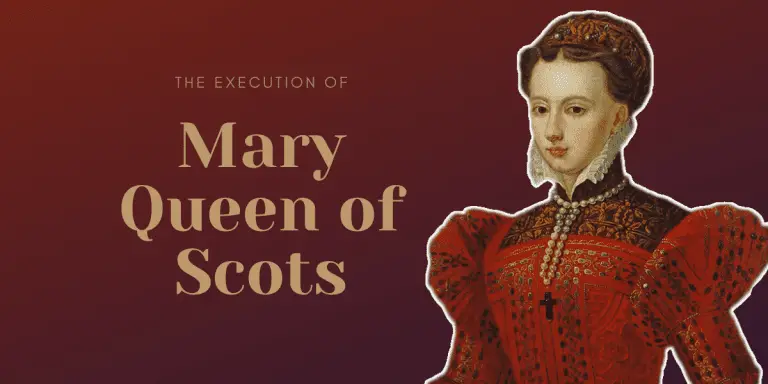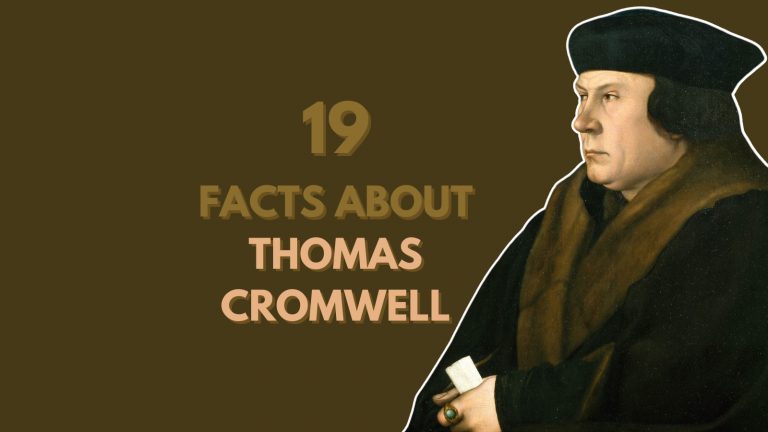16 Surprising Facts About Alfred the Great
Alfred the Great is probably the most famous of the Anglo-Saxon Kings.
He was King of Wessex between 871 and 899. Wessex was one of the seven Anglo Saxon Kingdoms. The others being East Anglia, Mercia, Northumbria, Essex, Kent and Sussex.
He wasn’t King of England because there were Anglo Saxon Kings in all of the seven kingdoms, but after inflicting defeats on the Vikings, he declared himself King of the Anglo-Saxons.
Here are some fantastic facts about Alfred, the only British King called “The Great.”
Alfred The Great became King aged just 21
The succession was not as clear-cut as it was today. It had to be confirmed by a council known as the Witan. It wasn’t simply a case of the throne passing from father to son.
Alfred was born at Wantage in Oxfordshire. He was probably the fourth or fifth child (records from so early in history are unclear), so it seemed unlikely that he would become King.
He had three older brothers who had all ruled Wessex. When the two eldest died, Alfred’s brother Ethelred was on the throne and had two sons. However, at some point in early 871, an agreement was made between the two brothers that Alfred would succeed Ethelred.
When Ethelred died in April 871, his sons were just children, and Wessex was threatened by Vikings. It made sense for Alfred to become King of Wessex, although technically, his title was King of the West Saxons.
He wrote everything down in chronicles
Well, King Alfred himself didn’t, but Bishop Asser did.
Bishop Asser was one of Alfred’s chief advisers, and he recorded everything in a biography of Alfred called “The Life of King Alfred.”
This is one of the reasons we know so much about Alfred and the Vikings today.
Towards the end of Alfred’s reign, the Anglo Saxon Chronicle was begun in Winchester. Once completed it was copied and sent out to monasteries across England.
Alfred’s capital was Winchester (which he redesigned.)
The Capital of Wessex was Winchester and was known as Wintanceaster. It was in Winchester that the King of the West Saxons had their treasury and palace.
However, the town was under constant threat from Viking Raids that were occurring throughout Southern England. Alfred redesigned the town so that it offered a better defence from Viking raids.
He didn’t want to fight and paid off the Vikings.
Alfred the Great was no stranger to fighting. He and his older brother fought together at the Battle of Ashdown in January 1871, where they defeated the forces of Bagsecg and Halfdan.
Alfred’s forces suffered a series of defeats after he became king. This started as Alfred was undertaking the funeral rites for his brother. The Danes defeated Alfred’s Anglo Saxon army, not once but twice.
Instead of deciding to fight, Alfred selected another strategy. He decided to make peace.
Essentially this meant paying the Vikings off. The Viking forces retreated from Reading and from the Anglo Saxon Kingdom as a whole sometime in the Autumn of 871.
Alfred was forced to flee for his life at Christmas.
The peace did not last long. Essentially they wanted to defeat the whole of Saxon England.
In 876, under the command of Guthrum, the Viking forces attacked Chippenham.
They did this in early January, as the 12 days of Christmas festivities were still taking place.
The entire town’s population was slaughtered.
However, King Alfred, his family and a small group of men escaped.
Alfred the Great was forced to live in swampland.
Alfred and his small band of men ended up at Athelney in the swampland of Somerset.
It was here Alfred established a new base.
Essentially he was all but defeated. However, it was from his fort in the middle of the marshes that he planned a resistance campaign against the Danes. He knew he needed a decisive victory to recapture his Kingdom.
The legend about the cakes is almost certainly rubbish.
One of the most famous legends in English history is about Alfred the Great and some burnt cakes. It centres around the time he was forced to flee to the marshes.
En route to Athelney, Alfred was said to have been given shelter by a peasant woman who had no idea who he was.
He was asked to watch some cakes cooking in the fire while she went out to complete other tasks. Alfred became preoccupied with the problems in his Kingdom and allowed the cakes to burn.
The peasant woman is said to have scolded King Alfred on her return – still none the wiser as to who he was.
However, there is little evidence to suggest that this story is true. The first recorded instance of it is seen a century after Alfred’s death.
King Alfred The Great defeated the Vikings.
Alfred rode to a place called Edbert’s Stone at Whitsuntide in 878. He had sent out messengers that all loyal military men were to meet him there.
He had no idea how many would turn up – after all, Alfred had been hiding with his royal family in the marshes for two years.
Alfred was amazed to find a huge army waiting for him. He still had the loyalty of the West Saxon people, and they still accepted Alfred’s rule.
At the Battle of Edington that followed, Alfred’s army won an important victory against the Danish forces. He then put Chippenham under siege and starved the danish forces into surrender.
Alfred negotiated the Treaty of Wedmore.
After the huge victory at the Battle of Edington, Alfred had the upper hand over the Danes.
Alfred and the danish leader, Guthrum, negotiated the Treaty of Wedmore. Under the terms, Guthrum was to convert to Christianity and take his army back to East Anglia. A copy of this treaty in wonderful Old English is preserved in Corpus Christi College.
Further negotiations ultimately led to the Treaty of Alfred and Guthrum, which resulted in the formation of the Danelaw, which divided up the Saxon kingdom of Mercia between Alfred and Guthrum.
He attacked and captured London.
In 886, Alfred captured the city of London from the Vikings. It was at this point he began calling himself King of the Anglo-Saxons.
Much like when he became King, and he redesigned Winchester, Alfred did the same with London. Essentially the Danes had made the city uninhabitable. He made a new street plan in a similar style. He also increased the amount and quality of the fortifications of the city.
He probably had Crohn’s disease.
In his biography of Alfred, Assar lists a range of symptoms that seemed to plague King Alfred the great throughout his life.
Essentially these were stomach complaints that would often leave Alfred bedridden.
Modern doctors think that Crohn’s disease is the most likely explanation.
Alfred was always surrounded by priests.
History tells us that Alfred the Great was a very religious person.
He was often surrounded by Priests and would often spend hours at prayer.
Alfred would carry a small notebook in which he would write down psalms and prayers that he had learnt over the years.
Alfred the Great had five children.
Alfred and his wife Ealhswith had five children.
His eldest child was Ethelflaed. Alfred married her to the King of Mercia as part of his attempts to unite England. She ended up ruling Mercia when her husband died.
Alfred’s eldest son was Edward. He became known to history as Edward the Elder. He succeeded his father to the throne of Wessex.
Edward and Ethelflaed often combined forces as they attempted to drive the Vikings out of England.
The other children were Ethelgifu, Abbess of Shaftesbury, Elfhryth, Countess of Flanders and Ethelweard.
King Alfred died in 899, aged 50
King Alfred the Great died on the 26th of October 899. He was aged 50.
There is no record of what Alfred died of; however, he was regularly ill, and it could have been a result of one of those periods of sickness.
His son, Edward, became King of Wessex.
His grave is lost.

Alfred was buried in the Old Minster in Winchester. This stood next to what is now Winchester Cathedral. It was where Arthur Tudor would later be born.
However, his son, Edward, completed his legacy project – the construction of a New Minster.
Four years after Alfred’s death, his body was exhumed and moved to this New Minster.
There it rested for 211 years.
Then the normans came along and began the construction of a new cathedral. To do so, they demolished Alfred’s “New Minister.”
Before this took place, the remains of Alfred and his family were taken to Hyde Abbey. There they were buried with royal honours before the high altar.
The Abbey was dissolved in 1538, the church was destroyed, and the land returned to farming.
In 1788 a jail was to be built on the site, and convicts were sent to prepare the land. They found the remains of the royal family. Somehow the convicts were allowed to break apart the stone coffins, the lead was sold, and the bones were scattered.
Attempts to locate the remains of Alfred the Great
The jail was demolished in 1850, and in 1866 John Mellor claimed to have discovered bones at the site. He said these were the bones of the dead King. He gave them to the vicar of St Bartholomews Church, who buried them in the churchyard in an unmarked grave.
In 1999 a professional dig took place at the site, and bones were found, but these were of an elderly woman.
The Church exhumed the bones buried by the vicar in 1866. Radiocarbon dating suggests these remains date from 1300, so they cannot be those of Alfred the Great.







